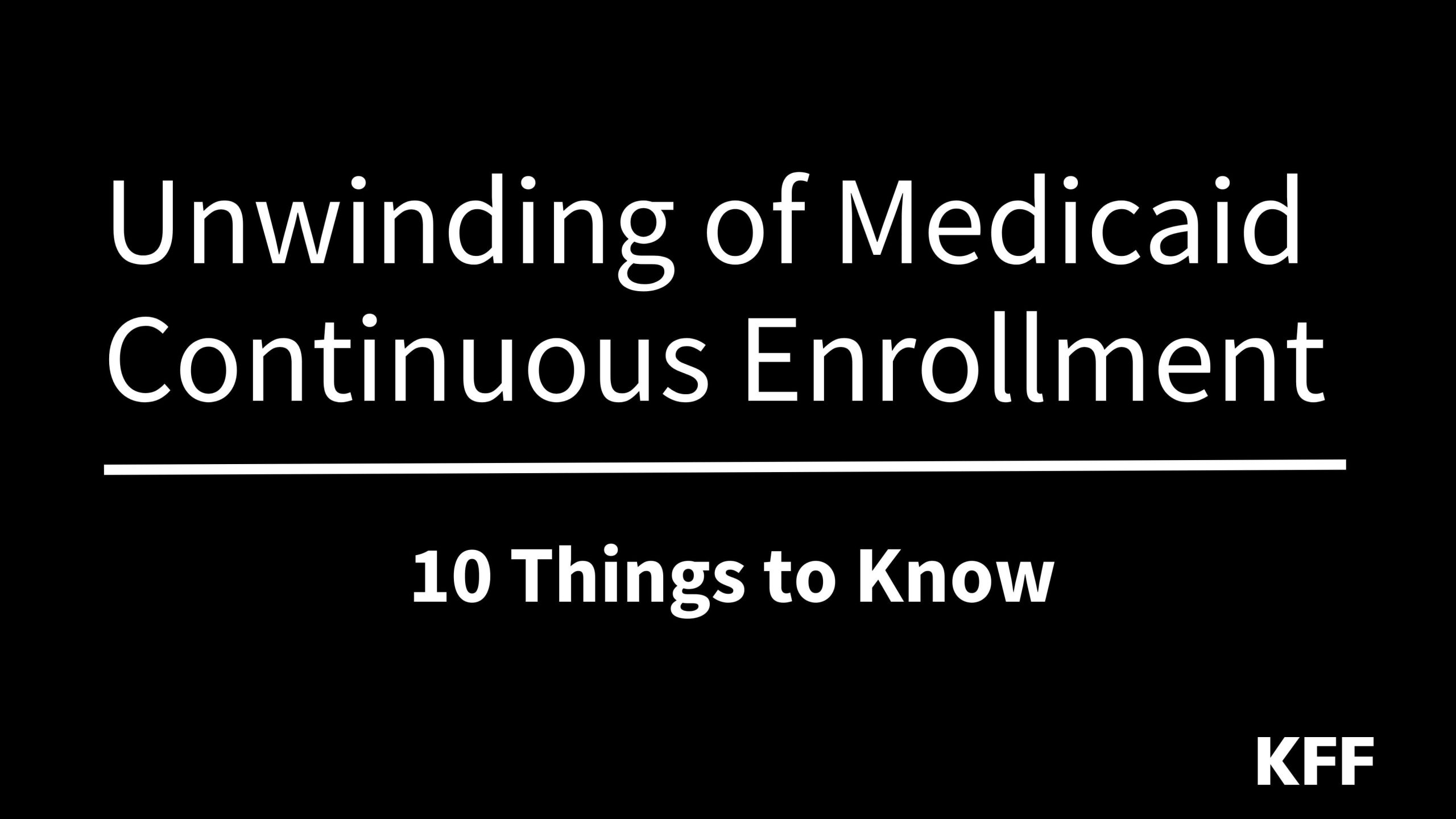
BREAKING NEWS
Insurers Face Financial Pressure from Medicaid Enrollment Changes
[Washington D.C.] – The Medicaid program, a vital component of the US healthcare system, is facing significant changes that could have far-reaching consequences for insurers. The Centers for Medicare and Medicaid Services (CMS) has announced a new rule that aims to increase Medicaid enrollment and reduce costs. However, the move is being met with resistance from insurance companies, who claim that the changes will put a significant strain on their finances.
Under the new rule, CMS will allow states to offer Medicaid coverage to more individuals, including those with higher incomes. This move is expected to increase Medicaid enrollment by millions of people, which could lead to higher costs for insurers. The CMS rule also aims to reduce costs by capping the amount of money that states can spend on Medicaid each year.
While the CMS rule is intended to improve access to healthcare for millions of Americans, insurance companies are warning that the changes could have unintended consequences. Insurers are concerned that the increased enrollment and reduced funding will put a significant strain on their finances, leading to higher premiums and reduced coverage options for consumers.
"This rule will create a perfect storm for insurers," said a spokesperson for the National Association of Health Underwriters. "We’re already facing significant financial pressure from rising healthcare costs and decreased funding, and this rule will only make things worse."
The CMS rule is part of a broader effort to reform the Medicaid program and reduce costs. The Trump administration has made it a priority to reform the program, which is expected to cost billions of dollars in the coming years.
"This rule is a step in the right direction for Medicaid reform," said a spokesperson for the Department of Health and Human Services. "We’re committed to making sure that Medicaid is sustainable and effective for years to come."
KEYWORDS
- Medicaid enrollment changes
- Insurers face financial pressure
- CMS rule
- Medicaid reform
- Healthcare costs
- Insurance premiums
- Medicaid funding
- Trump administration
- Department of Health and Human Services
- National Association of Health Underwriters
- Medicaid program
- Healthcare reform
- US healthcare system
- Centers for Medicare and Medicaid Services
RELATED ARTICLES
- "Medicaid Enrollment to Increase Under New CMS Rule" (The Hill)
- "Insurers Warn of Financial Pressure from Medicaid Enrollment Changes" (Modern Healthcare)
- "Trump Administration Moves to Reform Medicaid Program" (The New York Times)
- "CMS Rule Aims to Reduce Medicaid Costs" (Healthcare Finance News)
SOCIAL MEDIA
- Share this article on Twitter: "BREAKING: Insurers face financial pressure from Medicaid enrollment changes. Will the CMS rule lead to higher premiums and reduced coverage options for consumers? #Medicaid #Healthcare #Insurance"
- Share this article on Facebook: "Breaking news: The CMS rule aimed at increasing Medicaid enrollment and reducing costs has sparked concerns from insurance companies. Will the changes put a strain on their finances? #Medicaid #Healthcare #Insurance"
- Share this article on LinkedIn: "Breaking news: The CMS rule aimed at increasing Medicaid enrollment and reducing costs has sparked concerns from insurance companies. Will the changes put a strain on their finances? #Medicaid #Healthcare #Insurance"
CONTACT US
For more information or to schedule an interview with an expert, please contact [Your Name] at [Your Email] or [Your Phone Number].
During the COVID-19 pandemic, Medicaid enrollment surged due to federal measures that required states to maintain coverage for individuals, even if they gained other insurance. This policy, carried out in March 2020, lasted three years and added over 23.3 million people to Medicaid, pushing the total number of recipients to 95 million at its peak. Private insurers managing Medicaid plans greatly benefited from this influx, as roughly 75% of Medicaid enrollees were under their care. Having said that, with the end of the public health emergency, states have started removing individuals from Medicaid, resulting in more than 20 million people being disenrolled over the past year.
This decline in membership has led to a notable drop in revenue for insurers. While the reduction in revenue was expected, the greater concern for insurers has been the shift in the demographic of remaining enrollees. As healthier people left Medicaid roles, those who remained tended to have higher healthcare costs. This unexpected trend has put pressure on insurers' earnings, with companies like Centene, Elevance, and UnitedHealth experiencing increased Medicaid expenses this year.
In some cases, many disenrolled individuals had other insurance coverage, including employer-sponsored plans, but were still being counted as Medicaid members. Some were even unaware of their continued Medicaid enrollment during the pandemic, further inflating the numbers of people who weren't utilizing Medicaid services, yet still generating payments for insurers. This dynamic created a windfall for insurance companies, who were receiving funds from states for program members who didn't access care.
The impact of these changes is being felt in the stock market. For example, Elevance's shares dropped when the company projected higher Medicaid costs in the latter half of the year. Molina, however, experienced a favorable trading response after reporting earnings that offset Medicaid-related pressures with other financial gains.
Beyond enrollment, another growing concern is the increasing use of healthcare services among the Medicaid population. This mirrors a pattern formerly seen in Medicare, where procedure rates and service utilization rebounded. Medicaid businesses already operate on thin profit margins, and higher utilization rates exacerbate their financial challenges. Though insurers are working to secure better rates from states to account for rising costs, the process is slow as a result of the decentralized nature of Medicaid, where each state determines rates individually.
Although eventual rate adjustments are expected to alleviate some of the pressure, the road ahead for Medicaid insurers remains unclear and challenging as they navigate this transitional Medicaid enrollment period. In order to conserve program resources, insurers must look to innovative ways to increase efficiency and reduce costs.
Medicaid #Enrollment #SyrtisSolutions
View info-news.info by SyrtisSolutions1
